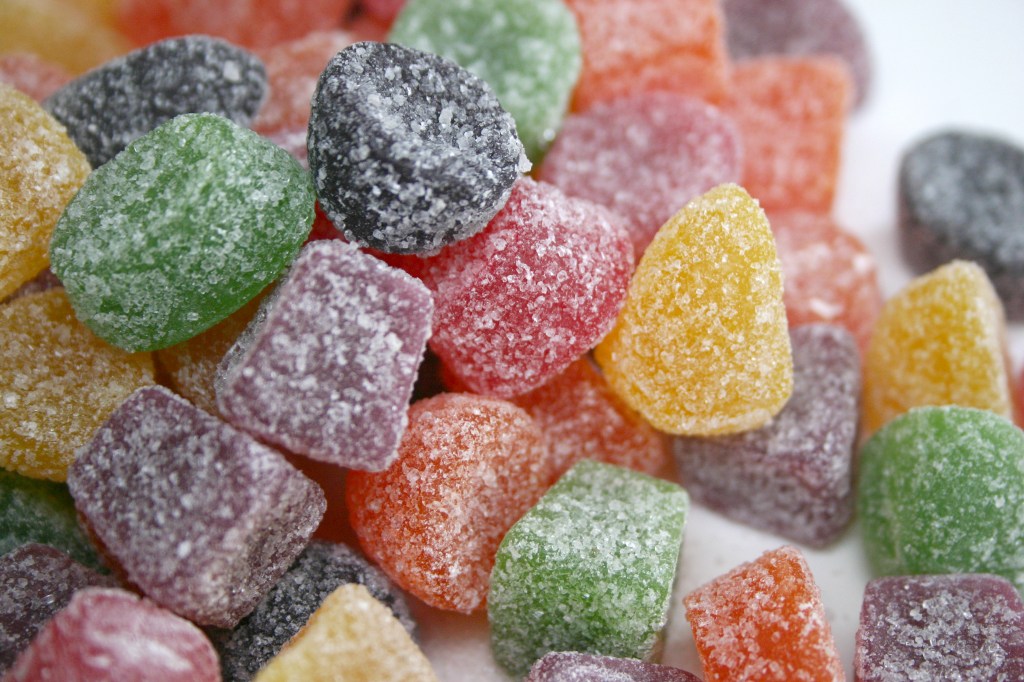
With the health and wellness trend in full swing and grocery seeking to lure more customers with promotional pricing, sugar confectionery sales through convenience continue to face significant challenges.
According to the most recent State of the Industry Report from the Australasian Association of Convenience Stores (AACS), the dollar growth of sugar confectionery in the channel fell by 3.3% in 2017, and unit growth fell by 2.2%. However, sugar confectionery still represents a whopping 28% of the total confectionery category and is a vital contributor to all convenience stores’ profitability.
The secret to ensuring the channel maintains its market share is for manufacturers and store operators to truly understand the customer and to recognise and exploit the advantages that convenience enjoys. The core difference between a convenience consumer and grocery consumer is the type of consumption. Grocery consumers make planned purchases, usually for shared use. The convenience shopper is looking for immediate, personal consumption with a treat that will provide temporary gratification. It therefore gives manufacturers a chance to target a different consumer, one that buys on impulse.
A recent report on sugar confectionery sales in Australia by market research company, Euromonitor International concludes that while promotional pricing can be key in driving growth within sugar confectionery, visibility is what really makes the difference.
“As supermarkets and mass merchandisers continue to streamline product offerings, smaller channels like forecourt retailers and convenience stores have become paramount in driving value growth for impulse items,” the report said.
“Especially in categories where health consciousness is not as prominent, such as confectionery.”
Euromonitor International said Nestlé Australia maintained its position as the leading brand across sugar confectionery categories in 2018, specifically in boiled sweets with Life Savers, in medicated confectionery with Allen’s Butter-Menthol, and in the pastilles, gums, jellies and chews with its range of Allen’s lollies. Mondelez Australia closely followed with The Natural Confectionery Co and Pascall Marshmallows.
Allen’s Snakes Alive, Allen’s Party Mix, and Allen’s Retro Party Mix are all ranked within the top five jelly products in convenience and Nestlé said with household penetration for lollies in Australia greater than 87%, the potential for the category in convenience is huge.
“Impulsive and attractive displays on and off shelf will appeal to shoppers who are highly inclined to participate when known and trusted brands are available for purchase,” said a Nestlé spokesperson.
“There is a high correlation between lolly purchases and channel shoppers buying general merchandise, groceries and food to go, meaning there are a number of key locations within store for secondary displays of lollies that provide a unique opportunity to the convenience channel.”
Robern Menz – which boasts the Violet Crumble and Menz Bumbles Choc Honeycomb ranges, as well as FruChocs in South Australia – agrees that off location displays are vital.
“Counter displays, end of aisles and display bins are crucial, as are promotions,” said the company’s Marketing Manager, Polly Love.
“In convenience, it’s all about the impulse purchase so the physical availability and ability to promote are vital.”
Confectionery in general and sugar confectionery in particular, respond well when shoppers have the opportunity to interact at multiple points through the journey to the register. This means that having impulse displays up to and including the front counter will deliver increased shopper conversion.
Lollies are more likely to be purchased as a part of a larger basket with the most common co-purchase being a beverage. This means that offering a strong range of sugar confectionery can provide a much bigger boost to a convenience store than simply the value of the sale itself.
An important way to generate interest in the category is through new products and new innovation. Nestlé said that using innovation as the lead offer in off-location displays can capitalise on the appeal of ‘new news’ to convert shoppers who are often tempted with multi-buys to mix and match a new product with well-established offers.
Robern Menz agrees on the importance of innovation and said that while current health trends are a challenge in some ways, they also offer an opportunity to diversify and develop products that respond to these changes.
“We’re seeing increased demand for sugar reduced/permissible treats as well as gluten free and vegan treats and we’re lucky to be in a position to be able to offer products that reflect this inclusivity,” said Ms Love. “Conversely, there’s also a growing trend for true indulgence snacks and, if consumers are indulging their sweet tooth, very often they go all out.”
Ms Love said that those customers now consuming sugar-free products were most likely not largely purchasers of the more ‘indulgent’ treats in the first place. She says that when people are looking for that sweet treat or indulgent moment, they will continue to make that choice.
Euromonitor International said flavour innovation and brand collaboration were key drivers of sugar confectionery sales in 2018, and that pastilles, gums, jellies and chews were all critical in that.
These collaborations and ‘crossovers’ help keep the consumer engaged and excited, and introduce confectionery products to new audiences. Many traditional confectionery brands are moving across categories and can be found in formats such as ice cream, drinks, biscuits, and baked goods.
Euromonitor pointed to the collaboration between confectionery giant Allen’s and Peters Ice Cream in launching a hybrid of the two iconic Australian brands in the form of Frosty Fruits and Drumstick lollies as a recent and successful example of this.
However, innovation isn’t always all about the product itself. Innovation in format and a well-structured breadth of offer across key pack sizes are also important in triggering growth.
“Lolly shoppers in convenience continue to look for a balance of favourites and new lines, with jellies complemented on the shelf by a growing contribution of ‘chews’ and ‘sour’ type products,” said a Nestlé spokesperson.
“This trend to a variety of different eating types is matched by the growth in format offers with small bags, bulk bags and travel cups now becoming more common and demonstrating a very clear difference in the convenience sugar confectionery range to that available in supermarkets.”
Nestlé said it has resized some products to ensure appropriate portion serving, and developed different packaging formats such as mini bags to help consumers choose sizes that suit their needs. It says having an intuitive pack size range that covers self-consumption (mini bags), family sharing (medium bags), and larger group gatherings (bulk bags) are important offers to maintain within the convenience channel.
Robern Menz said consumers are becoming more aware of plastic pollution but are, at the same time, looking for single serves and convenient packaging formats for on-the-go consumption.
“Convenience is much more about impulse, on the go snacking, so it’s a really important channel for our bar range and 100-150g bag range,” said Ms Love.
“We’re about to launch into convenience our 100g Violet Crumble bag share pack which we’re excited about.”
For many space-challenged convenience stores, selecting the most appropriate range to stock is a challenge. With shoppers’ time in front of the bagged sugar display measured in seconds, it is important that the range is simple to understand. Nestlé said that removing duplication by limiting similar product offers allows retailers to open up space on shelf to feature innovation, as well as ensuring that shelf space for top-selling lines is appropriate to maintaining on shelf availability.
“With shelf space at such a premium in convenience stores, reducing duplication allowing space to showcase leading SKUs and NPD can be the way to deliver disproportionate growth,” a Nestlé spokesperson said.
“There are examples within the channel where some retailers have reduced range duplication; this has delivered simplification of the on-shelf offer, improving shop-ability and delivering increased category value.”
However, while the big players dominate sugar confectionery, there are many smaller companies with innovative products that are also competing for space on the shelves.
New products and new companies are constantly emerging. The So Soft Marshmallow Co has quickly gained shelf space in Woolworths with marshmallow products such as its Jumbo Roaster, and its range will soon be available in IGA, Big W and Aldi, and the company will also be looking to rapidly increase its convenience presence.
Confectionery distribution business, CTC Australia, which boasts products such as Aussie Drops Portion Packs, Fini Lolly Cups and Swizzels Double Dips, says a balance of market leading brands and a small rotation of new innovations can allow a store to supply sales-driving products and also remain relevant with a selection of on-trend lines.
The company’s Marketing Manager, Bernard Fauvette, said it was also amazing how under-utilised the confectionery space is in most stores.
“By reducing dead space and adjusting placing, stores can often increase the amount of stock on their shelf by up to 30% and more product means more sales,” he said.
“The more display points utilised in store, the better your chances of being seen…other ways of standing out are seasonal pack changes, promotional packaging or on-pack promotions, all these help drive renewed interest in everyday lines.”
Mr Fauvette strongly believes that combination deals are the ideal way to capitalise on sales from multiple product categories.
“For example, partnering our eucalyptus drops with a water will drive summer sales of a traditionally winter line (Eucalyptus) and improve winter sales of a summer line (water),” he said.
“By strategically pairing products, outlets can maximise their sales over the entire 12 months and avoid fluctuating sales.”
In the end, success in sugar confectionery for convenience store operators is all about staying on top of key market trends and understanding the customers – what they want, in what format, and at what price point. Stores that making the most of the excitement surrounding new products, choosing their range wisely, and putting some careful thought into how and where to display will find the rewards are sweet indeed.

